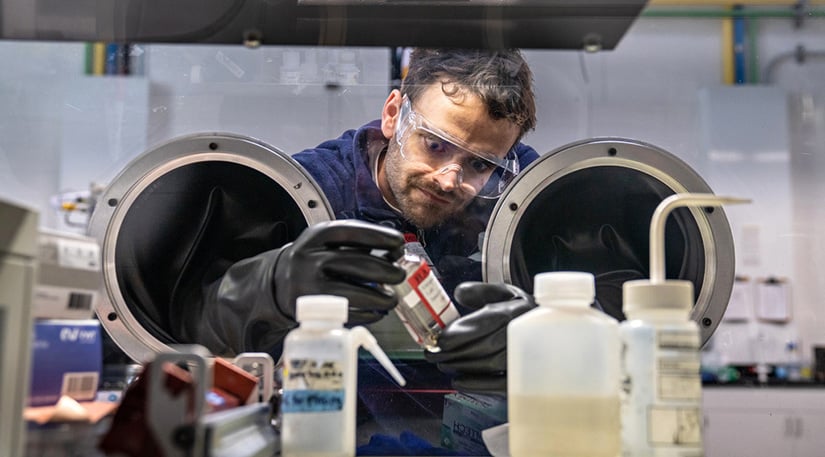Research
NLR energy conversion and storage expertise spans a broad portfolio of technologies to design tailored systems that maximize value and improve resilience across unique applications.

Energy Storage Research Projects
Learn more about the innovative energy storage projects happening at NLR.

Electrochemical Storage
NLR's electrochemical storage research ranges from materials discovery and development to advanced electrode design, cell evaluation, system design and development, engendering analysis, and lifetime analysis of batteries. We also research electrocatalysts, hydrogen production, and electrons to molecules for longer-term storage. NLR continues to explore refinements and new options, such as lithium-air, magnesium-ion, and solid-state technologies to power a variety of applications.
Related Research Projects
Learn more about other projects across the lab related to energy storage.
Geothermal Storage
NLR is advancing cutting-edge geothermal technologies, conducting world-class analysis, and improving access to data critical to unleashing thousands of gigawatts of domestic resources for always-on power, heating, cooling, and storage—by using the heat beneath our feet.
Pumped-Hydropower Storage
Through analysis of conventional and advanced pumped-hydropower storage, NLR is working to understand and improve grid flexibility, accommodate increased penetrations of variable generation, and reduce operating costs while boosting the grid's resilience. In addition, NLR is identifying pathways to commercialization for hydropower initiatives.
Buildings Thermal Energy Storage
NLR researchers are advancing the viability of thermal energy storage. At NLR, thermal energy science research focuses on the development, validation, and integration of thermal storage materials, components, and hybrid storage systems.
Hydrogen Storage
NLR has unique capabilities to conduct megawatt-scale research on hydrogen generation, energy storage, power production, and distribution. Researchers focus on hydrogen storage material properties, storage system configurations, interface requirements, and well-to-wheel analyses.
Energy Storage Analysis
NLR conducts analysis, develops tools, and builds data resources to support the development of transformative, market-adaptable storage solutions for the future. Researchers provide analytical support related to energy storage in studies on decision-making and impacts at all scales, including automotive, distribution and transmission grid applications, storage system design and optimization, and component development.
Share
Last Updated Dec. 6, 2025
